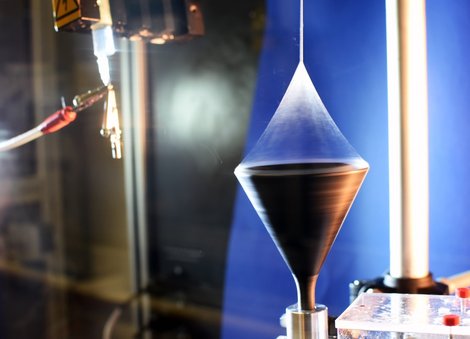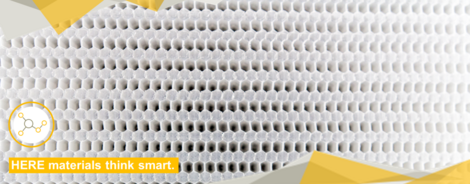Extremely resilient, extremely lightweight

Scientists from Saxony-Anhalt create super polymer fibers
With the help of researchers from the Martin Luther University Halle-Wittenberg in Saxony-Anhalt, experts from Bayreuth, Nanchang and Zurich have managed to produce unique polymer fibers. These fibers are distinctive for being extremely resilient while also very lightweight. They have many potential uses, including in the automotive industry.
It would not have been possible to understand the unique properties of the super polymer fibers without the scientists at the Martin Luther University Halle-Wittenberg (MLU). The Research Group for Microstructure-Based Material Design at the Institute of Physics, led by Prof. Ralf Wehrspohn, used a device known as the ZEISS Xradia 810 Ultra. This is a high-resolution three-dimensional X-ray computed tomography which was able to characterize the fibers. The technology allows scientists to create highly detailed 3D images of small samples. When the researchers modeled the fibers, they saw for the first time that the fibrils within each individual fiber are almost always arranged in the same lengthwise direction. Dr. Juliana Martins de Souza e Silva, Group Lead for the X-ray electron microscope at the MLU and a habilitation candidate in Prof. Wehrspohn’s research group, explains what the 3D images show together with the other findings: “Only the combination of a highly fibrillated orientation caused by stretching and tempering in the presence of a certain amount of poly bisazide as an interconnected molecule resulted in high strength and toughness as well as a high degree of crystallinity in a lightweight material.”
Extremely resilient
The fibers, which are chemically based on polyacrylonitrile, are remarkable for their extreme resilience and tensile strength while at the same time being extremely lightweight. One individual fiber with a diameter of around 0.04 mm comprises up to 4,000 ultra-thin fibrils. The additive – i.e., the connecting molecule – joins the fibrils in the fiber together with favorable results. However, it is not just the additive that is responsible for making the material strong, but also the fact that it is combined with the orientation of the many fibrils, which is a result of the stretching and heat treatment used during the manufacturing process. By way of comparison, an individual fiber is no thicker than a human hair and weighs less than a fruit fly but can nevertheless lift 30 g in weight.
There are few synthetic materials that combine such high strength with extreme toughness. The scientists from Halle mastered these important technological challenges together with researchers from the University of Bayreuth, Jülich Research Center and other partners in Germany, China and Switzerland. The polymer fibers they produced withstand deformation and fractures because they can stretch and then return to their original shape, meaning they can absorb lots of energy. “As well as being lightweight, the fibers are unique because it was difficult until now to combine high strength with high toughness in one material,” says Martins de Souza e Silva.
Many potential uses
Due to their unique properties, the fibers are ideally suited to use in technical components subject to high loads. For example, they could be used as a material for parachutes and protective gear in the textile industry or for artificial tendons and ligaments, tissue repair materials or surgical sutures in medical engineering. It is equally possible that they could be put to use in the aerospace industry as well as the automotive industry, where they could, explains Martins de Souza e Silva, be used in the manufacture of abrasion-resistant tires and other vehicle parts, helping to reduce the vehicle’s weight. Yet another benefit of the fibers is that they are recyclable.
The scientists believe that the material could undergo further development: “Our fibers use an innovative design principle that would also allow similarly strong, tough fibers to be produced from other standard polymers. Different combinations of polymers and linker molecules could therefore lead to the creation of new materials.” For now though, the polymer fibers discovered by the teams in Halle, Bayreuth, Nanchang and Zurich can be made straightforwardly using high-tech processes established in the sector. “We expect that our fibers will soon be put to practical use in industry,” says Martins de Souza e Silva.
Author: Anja Falgowski/IMG Sachsen-Anhalt

One can rightly claim that Saxony-Anhalt is an innovative commercial and scientific site for smart materials. Here, innovations for the global market are created with entirely different approaches. HERE materials think smart.
